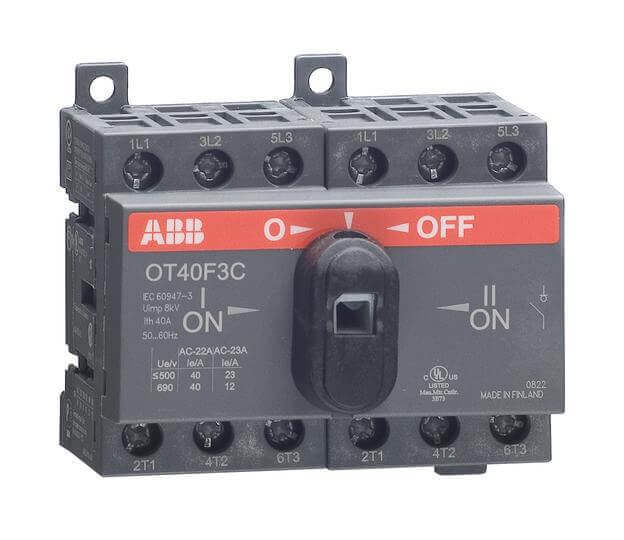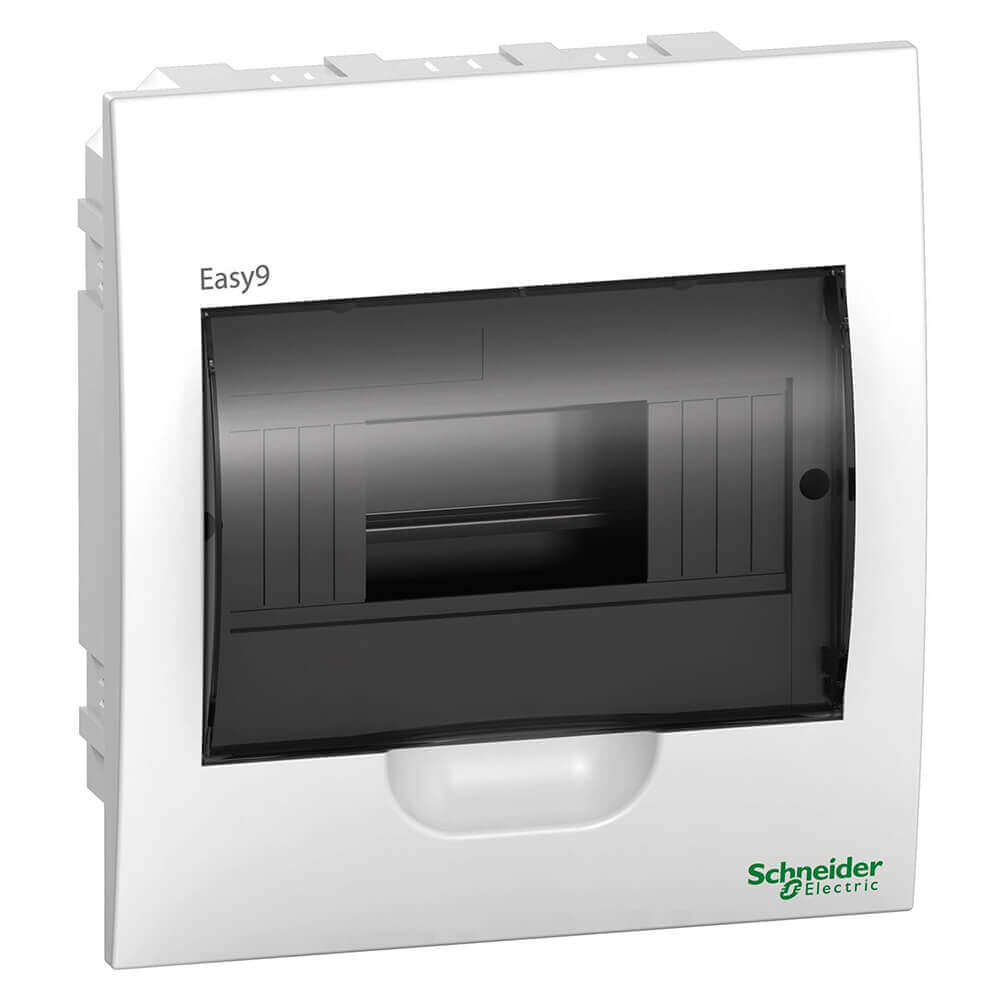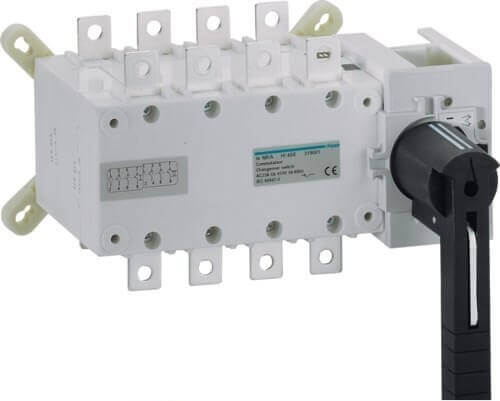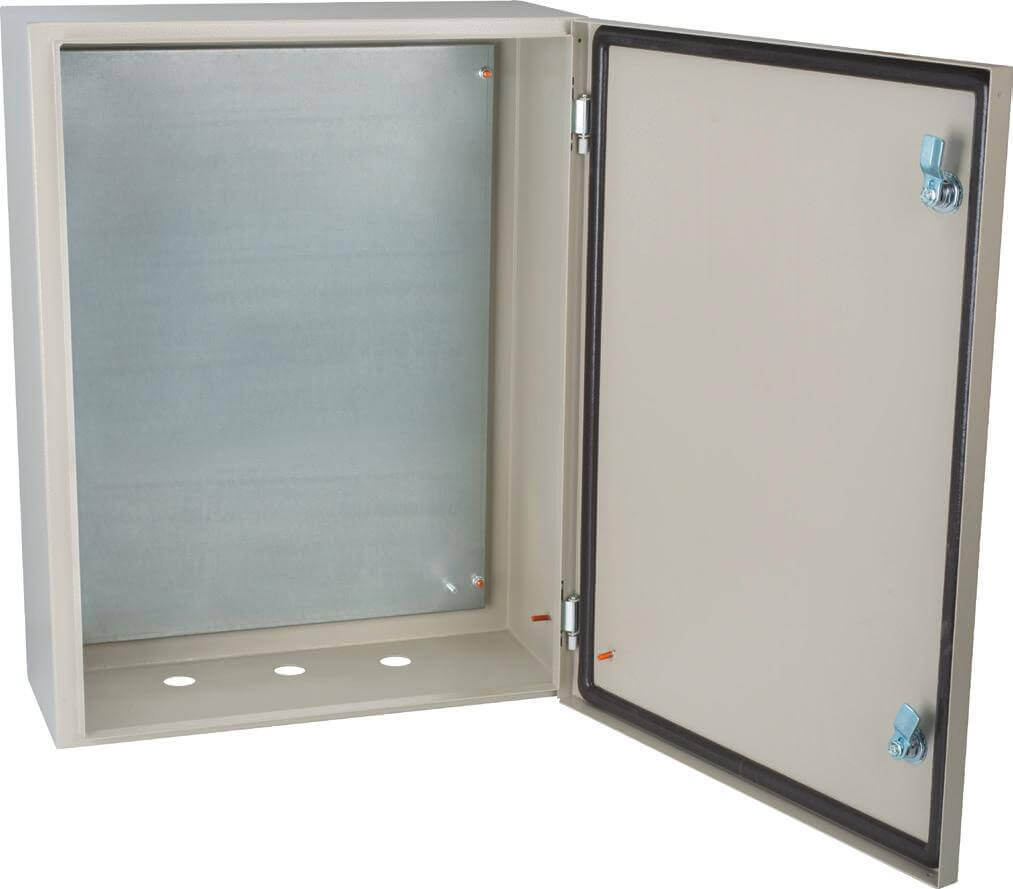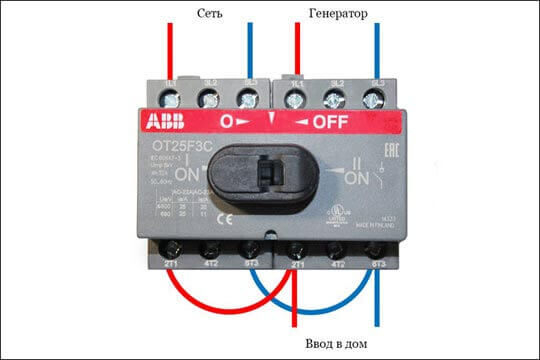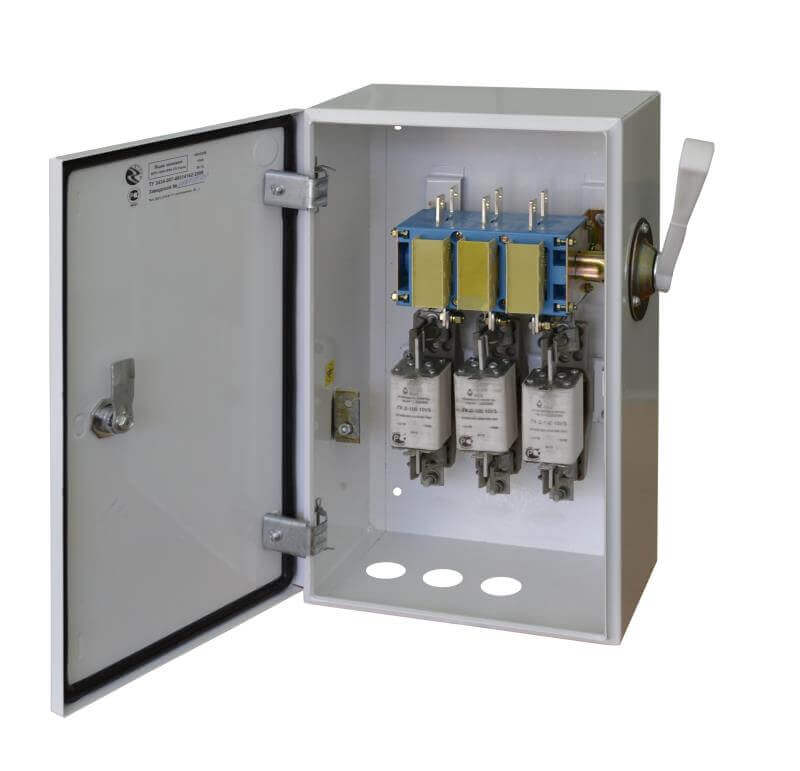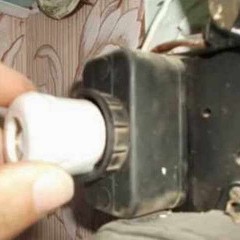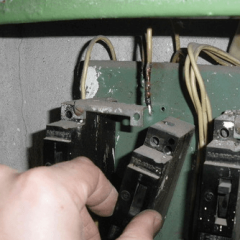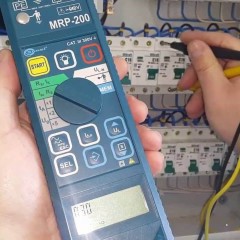Rules for connecting a cross over switch
Wiring diagram
Flip switches are of different types: unipolar, bipolar, tripolar and quadrupole. The first two versions are used in a single-phase network, the other two - in a three-phase network.
These devices are connected to the generator based on the type of electrical network into which the switch will be connected. For a single-phase network, a two-pole device is used, which simultaneously switches the zero and phase of the wiring, excluding the combination of the generator output voltage and the voltage that is supplied from the mains. A single-pole changeover switch can only be used to switch power between two phases of the same electrical network, where the neutral conductor is common and there is no need to switch it with switching devices.
If the generator and the house supply network are three-phase, then in this case a four-pole switch is used, which switches the three phases and zero between the main network and the backup network from the generator. Three-pole switching devices are used in circuits supplying a three-phase load without a neutral wire. Also, a three-pole device can be used in a single-phase network - in this case, only two poles will be involved at the input and output of the switching device.
Installation of cross over switches is carried out in switchboards, the type of which depends on the design of the switch. There are modular devices that are mounted on a standard DIN rail. Indoor can use plastic shields (boxes) or metal enclosures of panels, designed for the required number of modular places.
Outside the premises, metal shields are used that have a sufficient degree of housing protection for outdoor installation. Rocker switches of the usual design are mounted in panels equipped with a mounting plate.
A standard DIN rail can also be mounted on the mounting panel of such a shield for the installation of the necessary modular protective devices.
A cable coming from the metering board is connected to one input of the cross over switch - this is the main network. A backup network is connected to the second input - a cable from the generator. If the switch has one output, then the cable from the distribution panel is connected to it. Modular versions, as a rule, have two inputs and two outputs, so the two outputs are connected together in parallel by jumpers and connected to the distribution panel. Below is a diagram of a single-phase connection of a three-pole changeover switch to a generator and an electrical network:
In order to connect the cross over switch from two three-phase power sources, you need to use the following scheme:
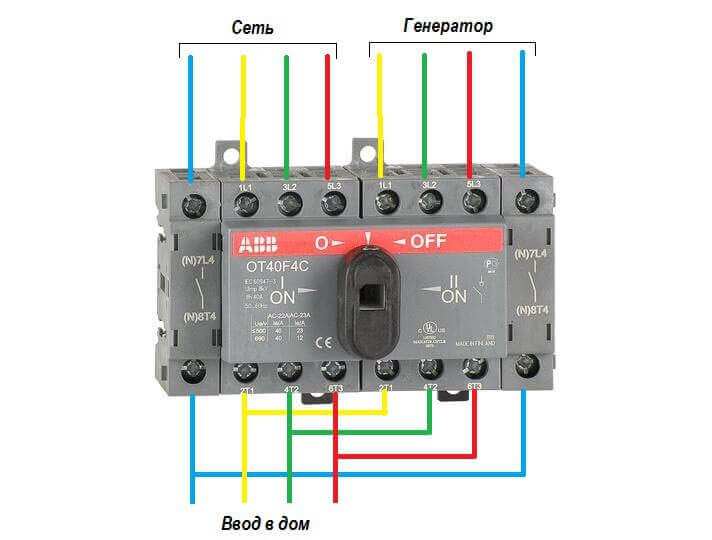 When connecting, it is necessary to observe the polarity so that when switching the switch at the output to the home shield, the phase and zero do not change places. The input from the mains is protected by a circuit breaker, which, as a rule, is installed in the metering panel, and the input from the generator must be protected by a circuit breaker, which is installed in the panel together with a cross over switch.
When connecting, it is necessary to observe the polarity so that when switching the switch at the output to the home shield, the phase and zero do not change places. The input from the mains is protected by a circuit breaker, which, as a rule, is installed in the metering panel, and the input from the generator must be protected by a circuit breaker, which is installed in the panel together with a cross over switch.
For industrial enterprises, devices are installed only if the input power is small. And so, basically, switchboards are installed - in them, for each input, it is installed circuit breaker. Depending on the scheme, work may be implemented. ABP or manual inclusion of a reserve by the corresponding automatic machine. If changeover circuit breakers are used, then, as a rule, only for control without load - the load is removed by circuit breakers.
If there is an arc suppressing device in the design of the device, the load can be switched by a cross over switch, but in any case, each of the supply lines must be additionally protected by a circuit breaker or fuses, since the cross over switch does not provide protection against emergency operation of the electrical network (overload and KZ).
Installation Recommendations
For safe and proper use of the device, the following recommendations should be considered:
- it is necessary to install the device indoors;
- the device must be protected from moisture, as well as from poor climatic conditions;
- the required temperature of the operating environment of the device ranges from -40 to +55 degrees;
- in case of burning of the upper part of the contact knife, it is necessary to clean it with a file;
- it is essential that the device is installed reliably and firmly.
If the cross over switch is installed outdoors, it is necessary to provide protection from environmental influences. It is also necessary to ensure the operation of the device within the permissible temperature range - that is, if it is outdoors, then it is necessary to provide heating for the cabinet where this switch is installed. Installation, maintenance and repair of the device should be carried out only by a specialist, and only with a complete blackout of the power supply network.
In the end, we recommend watching a video that details how to connect the cross over switch to the network:
It will be useful to read:

